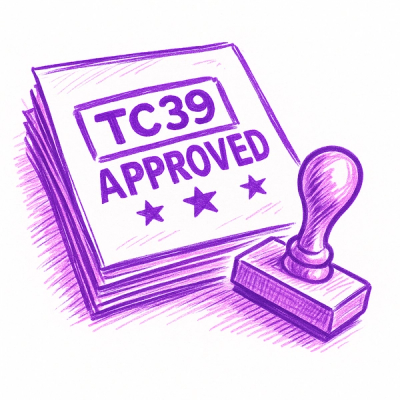
Research
/Security News
Malicious npm Packages Target WhatsApp Developers with Remote Kill Switch
Two npm packages masquerading as WhatsApp developer libraries include a kill switch that deletes all files if the phone number isn’t whitelisted.
dev-dynamsoft-node-barcode
Advanced tools
Dynamsoft Barcode Reader Node is a recognition SDK which enables you to embed barcode reading functionality in your applications. With a few lines of JavaScript code, you can develop a robust application to scan a linear barcode, QR Code, DaraMatrix, PDF4
This library is the Node.js edition of Dynamsoft Barcode Reader. If you are looking to implement barcode reading feature in a web page, please check out the other library Dynamsoft JavaScript Barcode SDK for Web.
Both 1D and 2D barcode symbologies are supported including the popular Code 39, EAN-13, QR, PDF417, etc. Find the full list here.
The library is based on webassembly which has been an official feature of Node.js since LTS 8. If you are using Node.js LTS 8 and have no plan to upgrade it, check out how to use the library in Node.js LTS 8. That said, Node.js version >= LTS 12 is recommended because the library will try to use worker_threads when decoding.
Node.js 15+ is required when using an online license.
Technical Support
Note that the node.js edition of the Barcode Reader may not be updated in time. If you need technical support, you can contact Dynamsoft support or create issues in https://github.com/Dynamsoft/javascript-barcode.
> node -v
v12.13.1
> npm install dynamsoft-node-barcode --save
js file and include the librarylet DBR = require("dynamsoft-node-barcode");
The following also works
let DBR = require("path/to/dist/dbr.js");
Note The library uses
Promisea lot, so it's recommended to write the related code in aasyncfunction so that later you can useawait(async()=>{ // many work will done here })();
let reader = await DBR.BarcodeReader.createInstance();
let results = await reader.decode('path/to/sample.png');
Or just decode a file by its URL
let results = await reader.decode('https://demo.dynamsoft.com/barcode-reader/img/AllSupportedBarcodeTypes.png');
NOTE
The following image formats are supported by default:png,jpg,bmp,gif.If you want to decode other files like
If you want to decode raw image data (
RGBA) from sources like a camera. You can use the APIdeocdeBuffer. Check out C++ API decodeBuffer for more details.
for(let result of results){
console.log(result.barcodeText);
}
> node your-code.js
Last not but least, don't forget to set a license key! If you don't have a key yet, click here to get one.
DBR.BarcodeReader.license = 'LICENSE';
let DBR = require('dynamsoft-node-barcode');
// Please visit https://www.dynamsoft.com/customer/license/trialLicense?product=dbr&package=js&utm_source=node to get a trial license
DBR.BarcodeReader.license = 'LICENSE';
let pReader = null;
(async()=>{
let reader = await DBR.BarcodeReader.createInstance();
for(let result of await reader.decode('https://demo.dynamsoft.com/barcode-reader/img/AllSupportedBarcodeTypes.png')){
console.log(result.barcodeText);
}
reader.destroy();
// Since the worker keep alive, you can call
await DBR.BarcodeReader._dbrWorker.terminate();
// when you need to exit this process.
// Or call
process.exit();
// directly.
})();
let DBR = require('dynamsoft-node-barcode');
// Please visit https://www.dynamsoft.com/customer/license/trialLicense?product=dbr&package=js&utm_source=node to get a trial license
DBR.BarcodeReader.license = 'LICENSE';
(async()=>{
console.log("============== create reader ==============");
let reader = await BarcodeReader.createInstance();
console.log("============== decode buffer ==============");
let fs = require('fs');
let buffer = fs.readFileSync(__dirname + '/sample.png');
for(let result of await reader.decode(buffer)){
console.log(result.barcodeText);
}
console.log("============== decode base64 ==============");
let strBase64 = buffer.toString('base64');
for(let result of await reader.decodeBase64String(strBase64)){
console.log(result.barcodeText);
}
console.log("============== decode file ==============");
for(let result of await reader.decode(__dirname + '/sample.png')){
console.log(result.barcodeText);
}
console.log("============== decode url ==============");
for(let result of await reader.decode('https://demo.dynamsoft.com/barcode-reader/img/AllSupportedBarcodeTypes.png')){
console.log(result.barcodeText);
}
console.log("============== destroy reader ==============");
await reader.destroy();
// Since the worker keep alive, you can call
await DBR._dbrWorker.terminate();
// when you need to exit this process.
// Or call
process.exit();
// directly.
})();
To set up the library for decoding, use the APIs getRuntimeSettings & updateRuntimeSettings.
await reader.updateRuntimeSettings("speed");
await reader.updateRuntimeSettings("balance");
await reader.updateRuntimeSettings("coverage");
let settings = await reader.getRuntimeSettings();
settings.localizationModes = [
Dynamsoft.DBR.EnumLocalizationMode.LM_CONNECTED_BLOCKS,
Dynamsoft.DBR.EnumLocalizationMode.LM_SCAN_DIRECTLY,
Dynamsoft.DBR.EnumLocalizationMode.LM_LINES, 0, 0, 0, 0, 0];
settings.deblurLevel = 2;
await reader.updateRuntimeSettings(settings);
See Barcode reading settings Guide for basic usage.
See C++ API RuntimeSettings for more details.
To find out which settings best suit your usage scenario, visit DBR Main Online Demo.
Any questions, please contact Dynamsoft support.
Node.js LTS 8 doesn't support worker_threads, so the decoding will happen in the same main thread which means it's a blocking operation. The following code snippets demonstrate the basic usage.
Decode
var dbr = require('path/to/dist/dbr-<version>.node.wasm.js');
dbr.onRuntimeInitialized = ()=>{
dbr.BarcodeReaderWasm.init('{"pk":"PRODUCT-KEY"}');
var reader = new dbr.BarcodeReaderWasm(false,-1);
var fs = require('fs');
var img = fs.readFileSync('./sample.png');
var resultsInfo = JSON.parse(reader.decodeFileInMemory(new Uint8Array(img)));
console.log(resultsInfo);
};
Change settings
var settings = JSON.parse(reader.getRuntimeSettings());
settings.expectedBarcodesCount = 999;
reader.updateRuntimeSettings(JSON.stringify(settings));
FAQs
Dynamsoft Barcode Reader Node is a recognition SDK which enables you to embed barcode reading functionality in your applications. With a few lines of JavaScript code, you can develop a robust application to scan a linear barcode, QR Code, DaraMatrix, PDF4
The npm package dev-dynamsoft-node-barcode receives a total of 0 weekly downloads. As such, dev-dynamsoft-node-barcode popularity was classified as not popular.
We found that dev-dynamsoft-node-barcode demonstrated a not healthy version release cadence and project activity because the last version was released a year ago. It has 4 open source maintainers collaborating on the project.
Did you know?

Socket for GitHub automatically highlights issues in each pull request and monitors the health of all your open source dependencies. Discover the contents of your packages and block harmful activity before you install or update your dependencies.

Research
/Security News
Two npm packages masquerading as WhatsApp developer libraries include a kill switch that deletes all files if the phone number isn’t whitelisted.

Research
/Security News
Socket uncovered 11 malicious Go packages using obfuscated loaders to fetch and execute second-stage payloads via C2 domains.

Security News
TC39 advances 11 JavaScript proposals, with two moving to Stage 4, bringing better math, binary APIs, and more features one step closer to the ECMAScript spec.